12 Wild Dog Breeds You Probably Didn't Know About
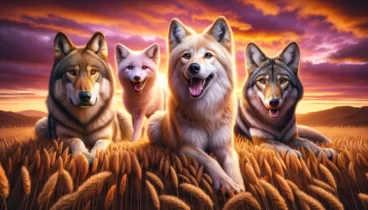
Canids (Canidae) are a family of carnivorous mammals that includes domestic dogs, the first animal in history to be domesticated, and wild dog breeds, which live in the wild in different regions of the world.
Both domestic and wild dogs are descended from wolves. While they share some similarities – and sometimes we may confuse a wild dog with a domestic dog – there are many differences between these two types of canids.
What’s the difference between a wild dog and a domestic dog? Where do wild dogs live? We’ll answer all these questions below and show you a list of twelve amazing wild dog breeds you may not have known about.
What’s a wild dog, and how does it differ from a domestic dog?
Several studies support that the dog was the first domesticated animal. One of the most important hypotheses postulates that it descends from an Asian wild dog that mixed with western wolves more than 7,200 years ago. However, wild dog breeds followed other lines of evolution.
This caused them to develop different skills to survive in the wild and to adopt very different temperaments.
While domestic dogs have a docile and controlled temperament and are accustomed to human contact, wild dogs have a survival instinct that overrides the attachment they may feel with the people around them, if any. Wild dogs can fend for themselves in their natural habitat and won’t adapt if someone tries to domesticate them, something that, on the other hand, could be very dangerous.
It should be noted that strictly speaking, calling them “wild dogs” is a mistake, as they’re animals of different species, although they’re all part of the Canidae family. However, their physical similarities with familiar canines have given them this nickname, which is socially accepted.
These are the 12 most surprising wild dog breeds
Now that you know the difference between domestic and wild dogs and why it’s not advisable to try to domesticate the latter, we’ll bring you a list of 12 wild dog breeds you may not have known about.
1. African wild dog (Lycaon pictus)
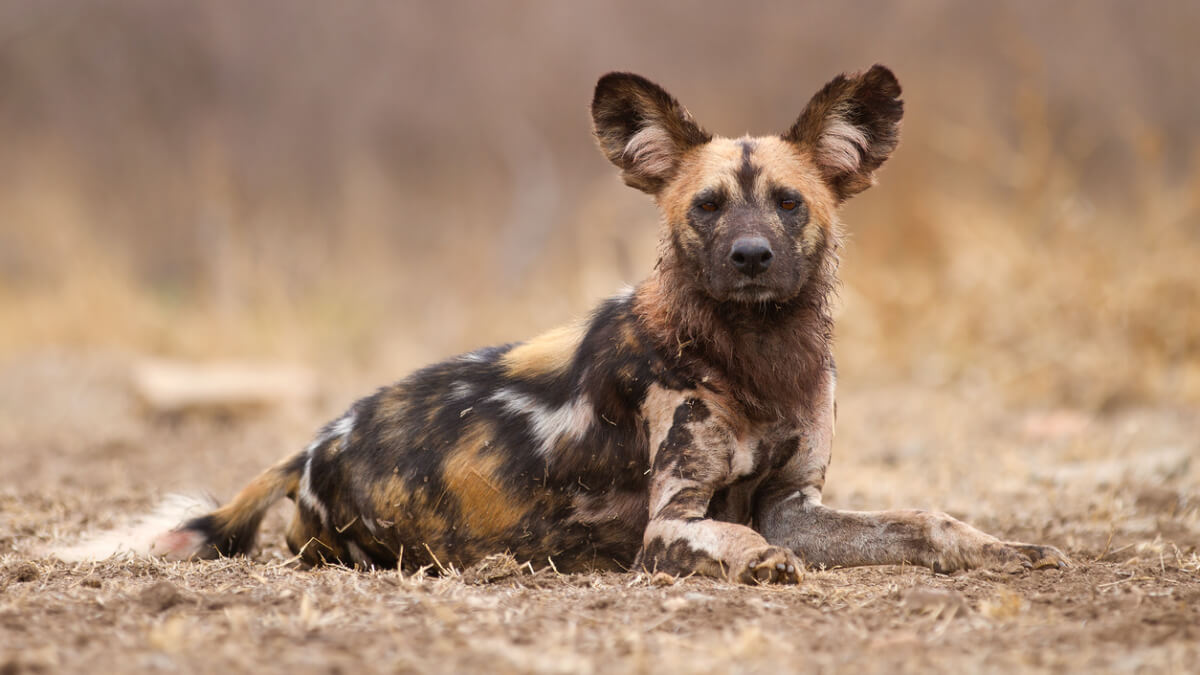
The African wild dog, also known as “Lycaon,” is a canid that lives in Africa. It’s medium-sized, with a weight of 64 pounds and a length ranging from 30 to 43 inches (its tail can reach 12 to 16 inches). Its ears are large and erect, so much so that this is one of its main characteristics.
It inhabits grasslands, forests, and deserts of sub-Saharan Africa.
African wild dogs have a three-colored coat with black, white, and beige spots, so they look very similar to hyenas. In fact, their discoverer, Coenraad Temminck, initially thought it was a hyena species and named it Hyaena picta.
However, African wild dogs and hyenas are very different: The former are part of the Canidae family and the latter are feliform. Moreover, hyenas are one of their natural enemies!
Unfortunately, the African wild dog has been an “endangered” animal since 1990. According to the International Union for Conservation of Nature (IUCN) Red List, there are only 1400 mature specimens left in the wild.
2. Dhole (Cuon alpinus)
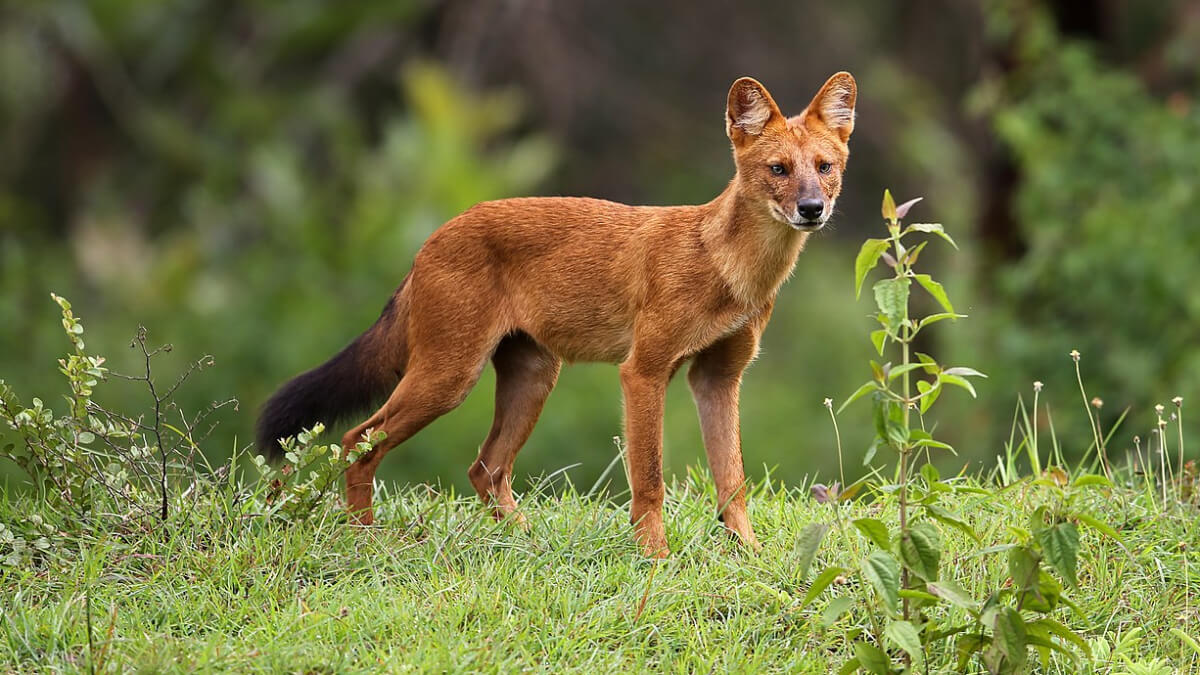
The Dhole is a carnivorous mammal that, like the African wild dog, is classified as “endangered” according to the IUCN Red List. The few wild specimens of this animal live in clans in Central and East Asia.
As for their size, they’re medium to large, weighing about 40 pounds, and are barely more than 20 inches tall. Their reddish hue means that they’re often mistaken for foxes or coyotes. They’re sociable among their own kind and very good hunters.
3. Dingo (Canis lupus dingo)
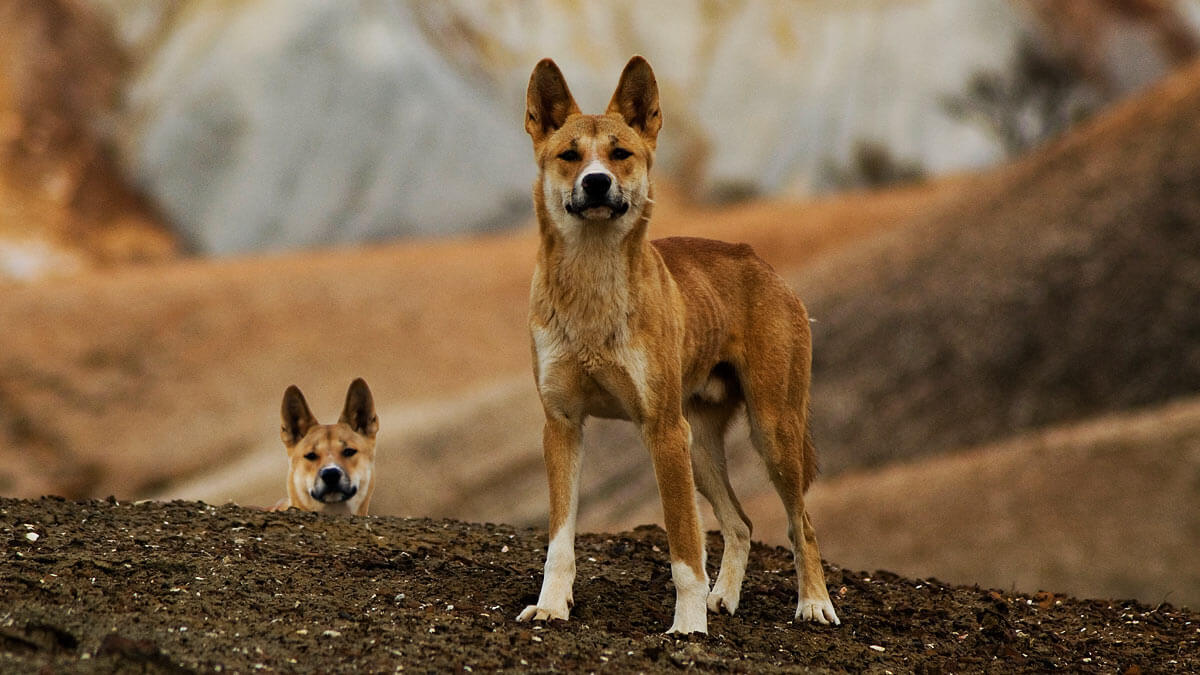
The dingo is an Australian wild dog. It resembles a domestic dog in that it’s medium-sized and weighs up to 33 pounds.
This wild dog is an opportunistic carnivore, and it feeds on kangaroos, rabbits, wombats, and wallabies. In addition, the dingo is believed to be partly responsible for the extinction of the Tasmanian tiger, a carnivorous marsupial that ceased to exist a hundred years ago. Its taxonomic classification is disputed, so much so that there’s no consensus on the matter.
4. Jackal (genera Canis and Lupulella)
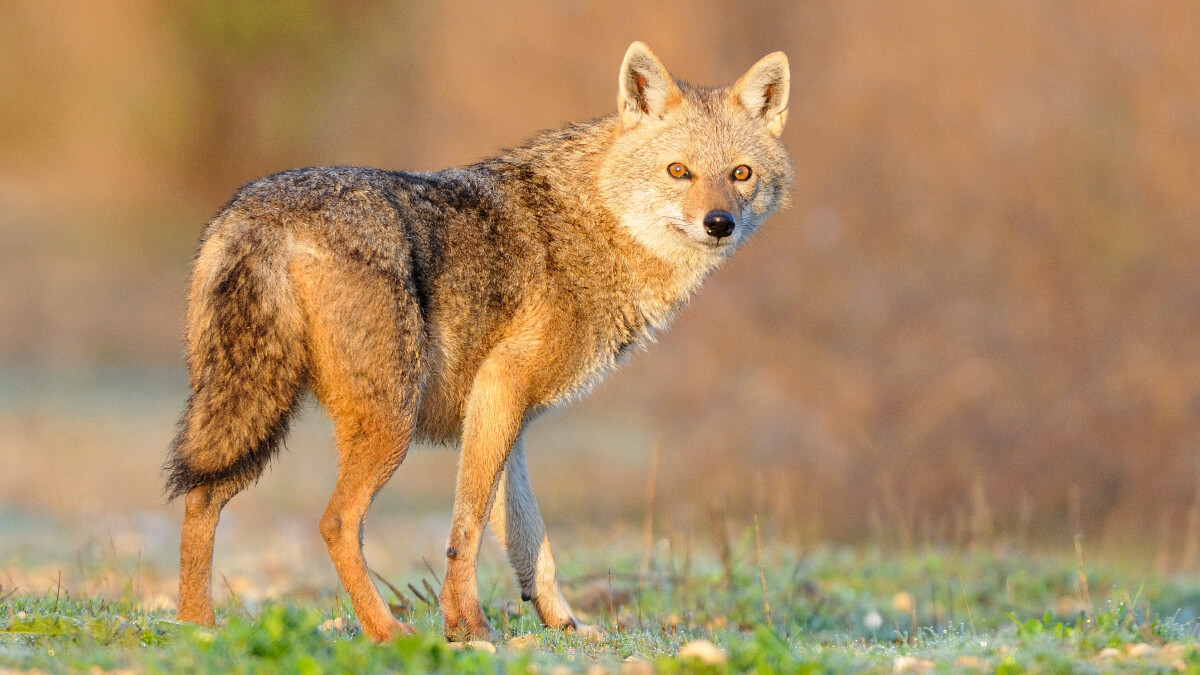
The jackal isn’t an animal per se, but the term is used to refer primarily to three distinct species, namely, the golden jackal (Canis aureus), the striped jackal (Canis adustus), and the black-backed jackal (Canis mesomelas).
These animals have stable populations distributed in Africa, Asia, and Eurasia.
They’re medium-sized, omnivorous wild dogs, although they can also be scavengers if they need to be. They can reach high speeds to catch prey and are crepuscular.
5. Short-eared dog (Atelocynus microtis)
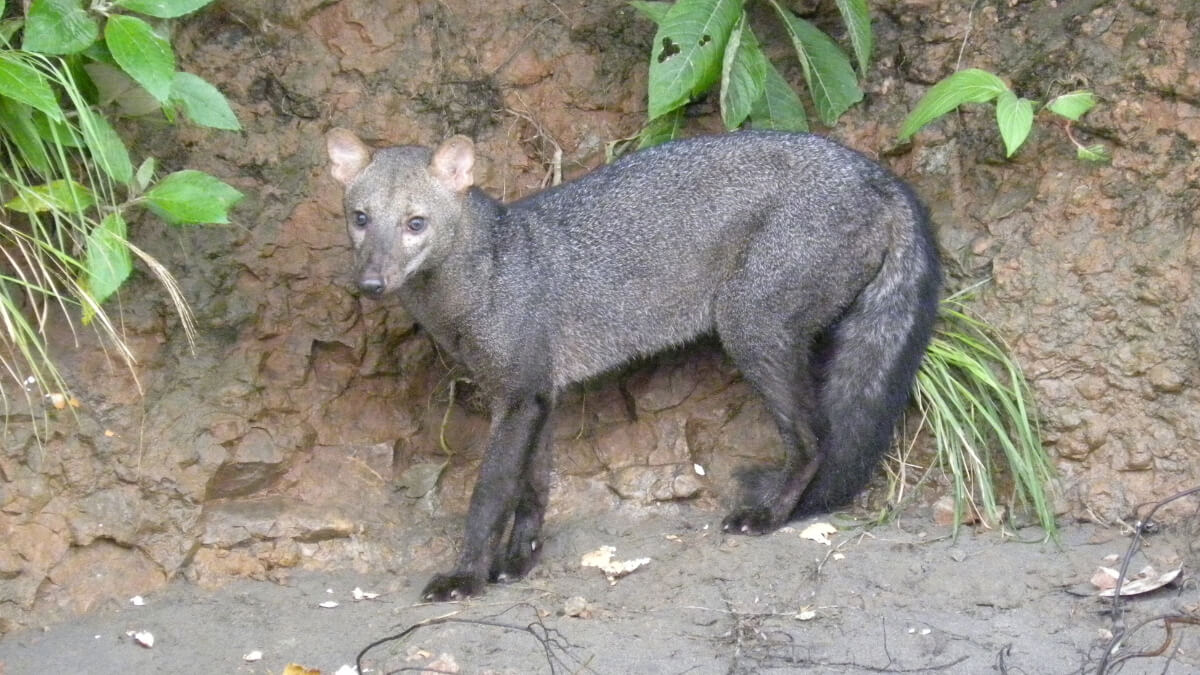
You may never have heard of the athelocine, also known as the short-eared dog, short-eared zorro, or small-eared dog. It’s a wild canid native to South America and inhabits the rainforests of the following countries:
- Peru
- Brazil
- Bolivia
- Ecuador
- Colombia
This wild dog is small – weighing no more than 20 pounds and standing 14 inches tall – and has a chubby appearance: it’s easy to mistake them for domesticated animals that have overeaten. In any case, they’re solitary, nocturnal, and very shy; moreover, they run away from humans, making them very difficult to spot. The IUCN considers the short-eared to be “near-threatened,” with a falling population.
6. Arctic fox (Vulpes lagopus)
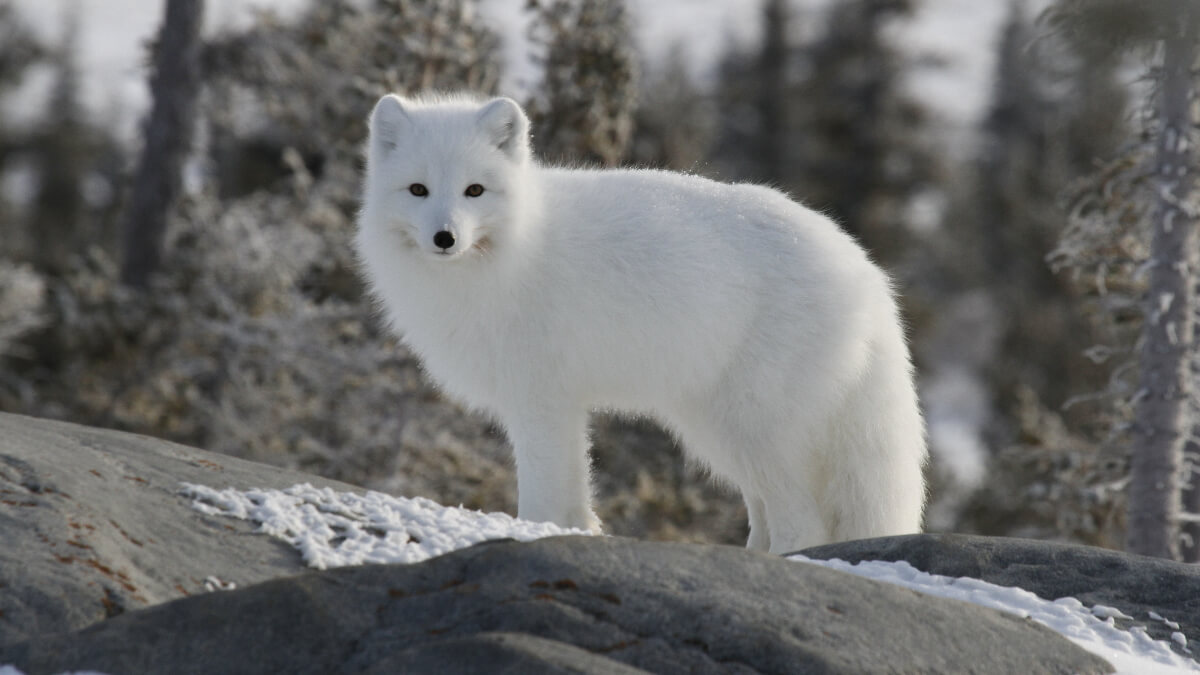
The Arctic fox, also known as the white fox, polar fox, or snow fox, is a small canid that lives in icy areas in northern America, Europe, and Asia. Its fur is white in winter, which helps it camouflage with the snow, and gray in summer to go unnoticed among the mountains and rocks.
Fortunately, there’s a stable and healthy population of arctic foxes, perhaps due to their inhospitable location, as they live in areas with little or no human presence. According to National Geographic, Arctic foxes can survive in freezing areas with up to 58 degrees below zero, sheltering from snowstorms in dens and tunnels they build in the snow.
7. Gray wolf (Canis lupus lupus)
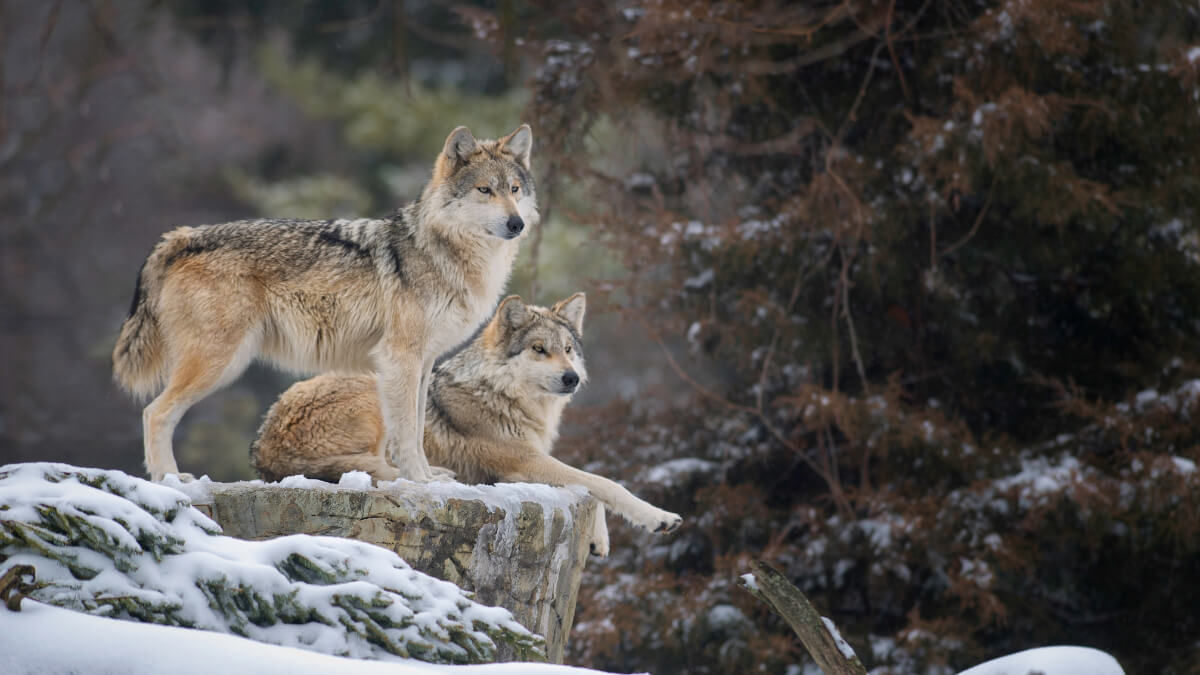
The most representative image we have when we imagine a wild dog is that of the gray wolf, the direct ancestor of dogs, according to DNA sequence and other genetic studies. Gray wolves, which are native to Eurasia and North America, are large animals, averaging 86 pounds. However, specimens weighing up to 176 pounds have been documented.
Wolves live in packs in which an alpha male and female are the dominant pair. These carnivorous mammals are excellent hunters and can take down extraordinarily large prey, such as elk, without major problems.
8. Red wolf (Canis lupus rufus)
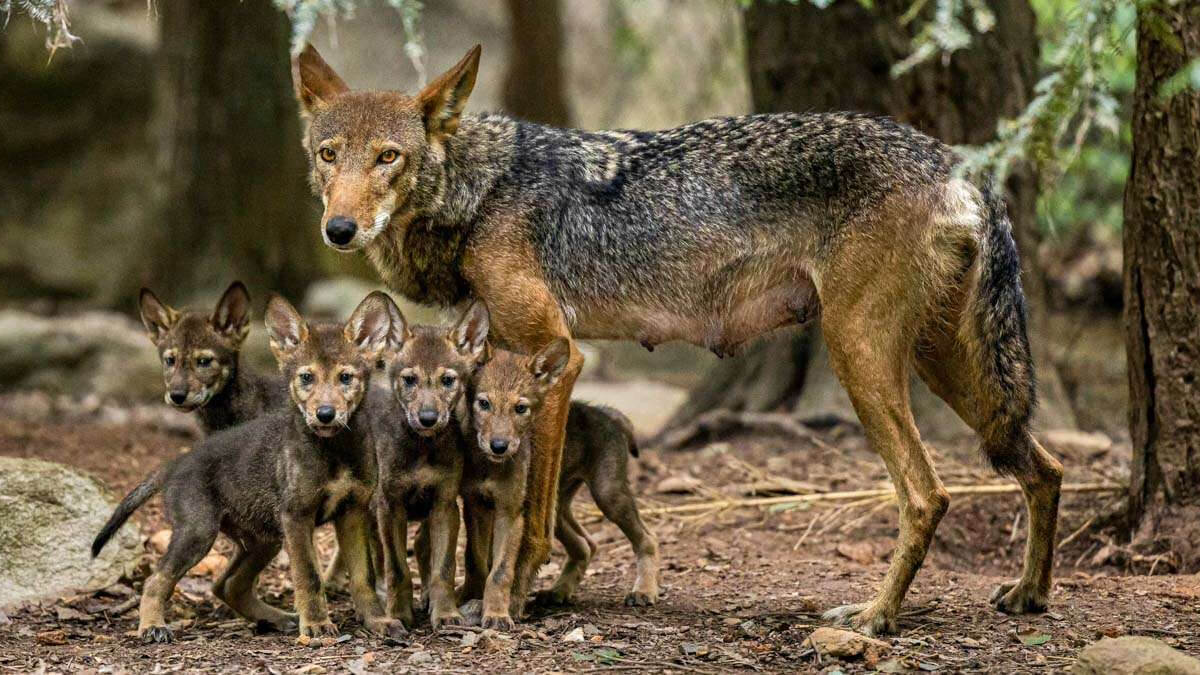
The red wolf is a canid that inhabits Mexico and the United States. Although part of the scientific community has categorized it as Canis lupus rufus, there’s great controversy regarding its taxonomic classification because some scientists consider it a subspecies of the gray wolf, while others believe it’s a recent hybrid between wolf and coyote.
Its resemblance to these two animals is very noticeable, as it has a medium size, around 55 pounds, and a reddish brown coat. Unfortunately, it’s “critically endangered.” There’s only a small population of 20 to 30 mature specimens, according to the IUCN Red List. The main reasons for the decline of this animal are uncontrolled hunting and hybridization with coyotes.
9. Maned wolf (Chrysocyon brachyurus)
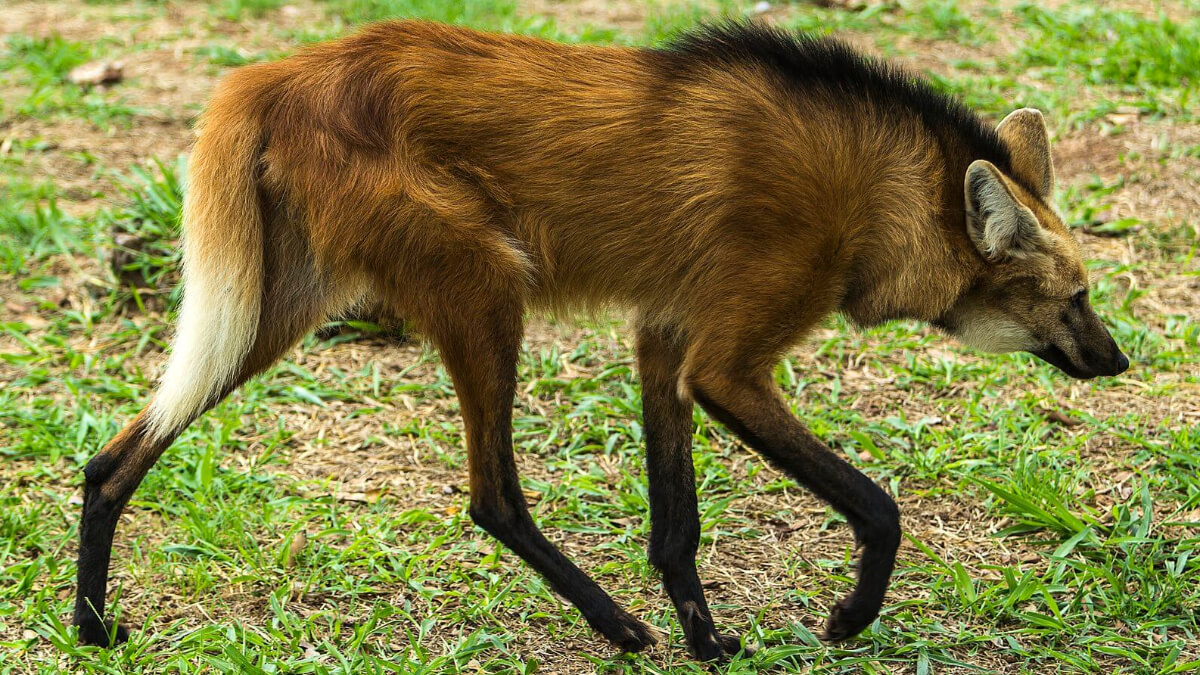
Can you imagine a dog with a mane like horses have? This is what the maned wolf, also known as “aguará guazú,” looks like. This animal is harmless to people and livestock. It feeds on small mammals, birds, and ants, although it also eats fruit.
The aguará guazú weighs 93 pounds and is more than 3.3 feet tall. It’s found in the following countries:
- Peru
- Brazil
- Bolivia
- Uruguay
- Paraguay
- Argentina
In fact, it is considered the largest canid in South America.
It’s the only species of its genus, and its closest relative is the Falkland Islands wolf (Dusicyon australis), which became extinct in the 19th century. According to one study, the species diverged nearly seven million years ago.
10. Carolina dog (Canis lupus familiaris)
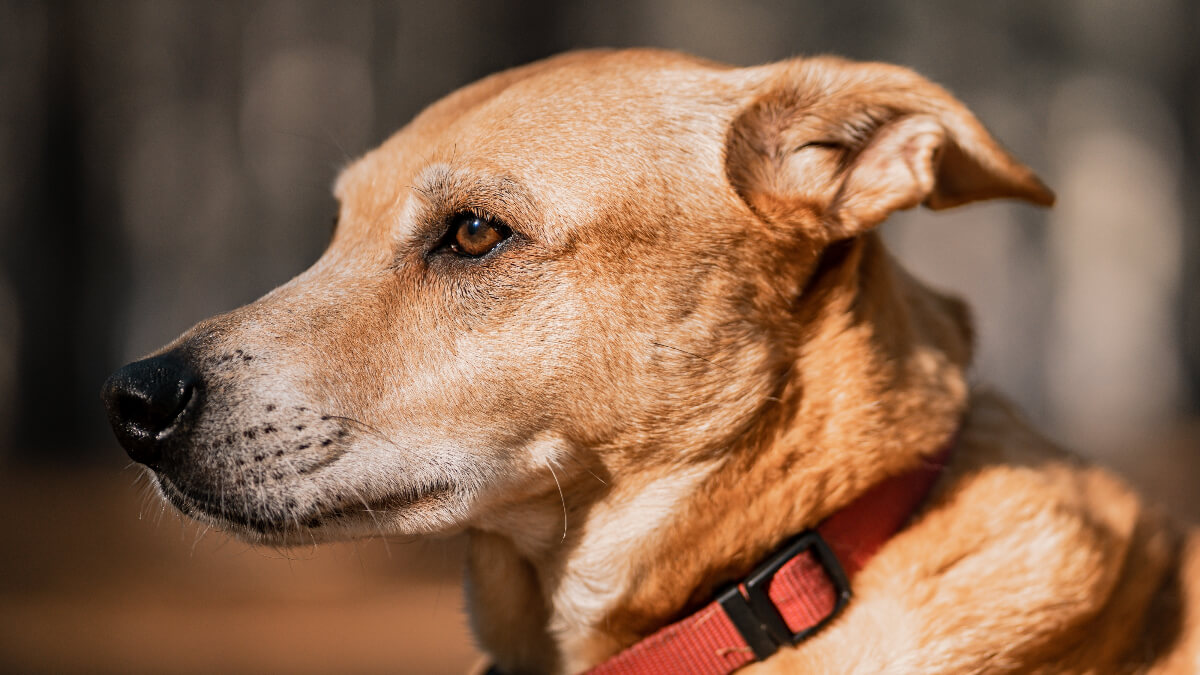
The Carolina dog, yellow dog, yaller dog, American dingo, or Dixie dingo was recognized in 1995 as a pure breed of dog by the American Kennel Club (AKC), the U.S. pedigree registry. However, it was first found not long ago in the wild. It has a similar appearance to the Australian dingo, as it’s tall, long, and has a ginger-colored coat.
The American dingo is perhaps the only one of the wild dog breeds on this list that’s amenable to being domesticated, although that will only happen if it’s properly socialized from the time it’s a puppy. Carolina dogs are affectionate with their human companions, but limit affection-seeking.
11. New Guinea singing dog (Canis lupus hallstromi)
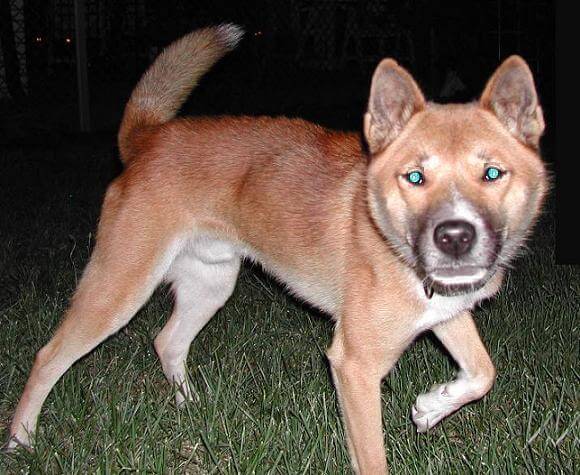
The New Guinea singing dog is a subspecies of wolf that’s closely related to the Australian dingo that became isolated on the island of New Guinea thousands of years ago. It’s a small animal, about 33 pounds and about 16 inches tall.
Its name is due to its peculiar howl, as it can modulate a tone resembling the song of whales. This wild dog breed is a good climber and lives in mountains between 8200 and 15420 feet above sea level, so it’s very difficult to observe them and closely follow their conservation status.
They were thought to be extinct for a long time, but in 2020, a research study in the journal Proceedings of the National Academy of Sciences found that they still exist in the wild.
12. Coyote (Canis latrans)
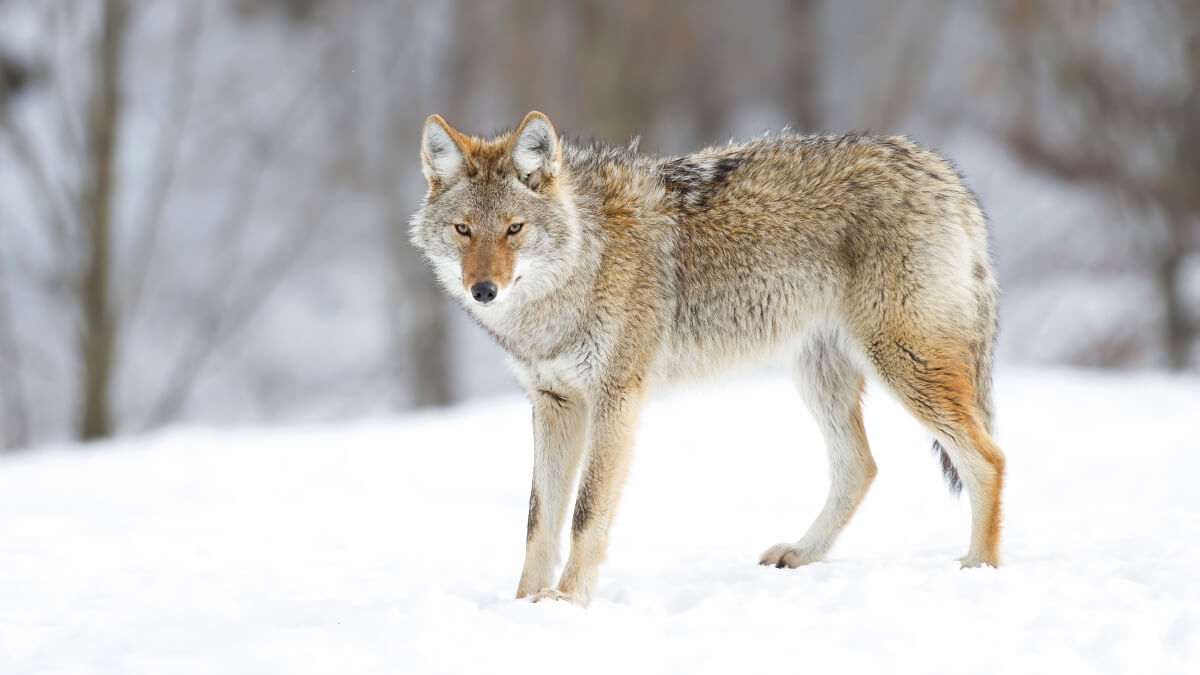
The last of the wild dog breeds on this list is a well-known one, the coyote, which was originally found in North America, although it can now be seen throughout the continent. In 2013, for example, they were found for the first time in areas of Mexico, such as Chiapas, where they had never been recorded before.
Coyotes are among the few canids that have managed to adapt seamlessly to a multiplicity of ecosystems, including deserts, jungles, and urban areas. One of the factors that may contribute to the increase in their population is deforestation.
These animals are medium to large in size (weighing an average of 18 to 44 pounds) and have a length of between 3.3 and 4.5 feet. They have a light gray or red coat, depending on the geographic area where they live.
Wild canids: Similar to dogs but with key differences
The diversity of wild dog breeds that coexist in different parts of the world reflects the evolution of the Canidae family. You see, although they share common ancestors with domestic dogs, wild canids have unique adaptations that allow them to live in the wild, as well as wilder and sometimes surly behaviors.
There’s no doubt that conservation efforts for all these species are crucial, especially in cases of “critically endangered” animals such as the African wild dog or the red wolf. Now, you can share your knowledge about these 12 wild dog species.
All cited sources were thoroughly reviewed by our team to ensure their quality, reliability, currency, and validity. The bibliography of this article was considered reliable and of academic or scientific accuracy.
- American Kennel Club. (s. f.). Carolina Dog. Consultado el 23 de enero de 2024. https://www.akc.org/dog-breeds/carolina-dog/
- Asociación Nacional de Amigos de los Animales (ANAA). (s. f.). Diferencias entre animales salvajes y domésticos. Consultado el 23 de enero de 2024. https://www.anaaweb.org/diferencias-animales-salvajes-domesticos
- Bergström, A., Stanton, D. W. G., Taron, U. H., et al. (2022). Grey wolf genomic history reveals a dual ancestry of dogs. Nature, 607, 313–320. https://www.nature.com/articles/s41586-022-04824-9
- Cell Press. (3 de noviembre de 2009). New Clues To Extinct Falklands Wolf Mystery. ScienceDaily. https://www.sciencedaily.com/releases/2009/11/091102121449.htm
- National Geographic. (4 de octubre de 2023). Perro doméstico: datos imprescindibles sobre el mejor amigo del hombre. https://www.nationalgeographic.es/animales/perro-domestico
- National Geographic. (17 de marzo de 2023). Zorro ártico. https://www.nationalgeographic.es/animales/zorro-artico
- Peña, J. L., Castillo, A. A., & Benítez, M. J. (2014). Primer registro de coyote (Canis latrans) en la región de la selva Lacandona, Chiapas, México. Acta Zoológica Mexicana, 30(3). https://www.scielo.org.mx/scielo.php?script=sci_arttext&pid=S0065-17372014000300018
- Phillips, M. (2018). Canis rufus (versión de errata publicada en 2020). La Lista Roja de Especies Amenazadas de la UICN 2018: e.T3747A163509841. https://www.iucnredlist.org/species/3747/163509841
- Surbakti, S., Parker, H. G., McIntyre, J. K., Maury, H. K., Cairns, K. M., Selvig, M., … & Ostrander, E. A. (2020). New Guinea highland wild dogs are the original New Guinea singing dogs. Proceedings of the National Academy of Sciences, 117(39), 24369-24376. https://www.pnas.org/doi/10.1073/pnas.2007242117
- Slater, G. J., Thalmann, O., Leonard, J. A., Schweizer, R. M., Koepfli, K. P., Pollinger, J. P., … & Wayne, R. K. (2009). Evolutionary history of the Falklands wolf. Current Biology, 19(20), 937-938. https://www.sciencedirect.com/science/article/pii/S0960982209016959
- Woodroffe, R. y Sillero-Zubiri, C. (2020). Lycaon pictus (versión modificada de la evaluación de 2012). La Lista Roja de Especies Amenazadas de la UICN 2020: e.T12436A166502262. https://www.iucnredlist.org/species/12436/166502262